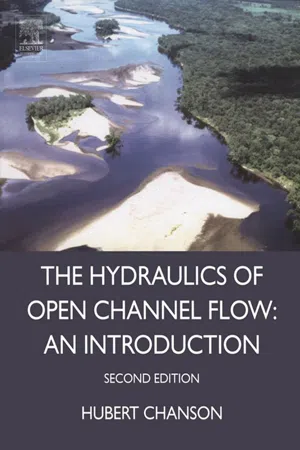
- 650 pages
- English
- ePUB (mobile friendly)
- Available on iOS & Android
Hydraulics of Open Channel Flow
About this book
Since the publication of its first edition in 1999, 'The Hydraulics of Open Channel Flow' has been praised by professionals, academics, students and researchers alike as the most practical modern textbook on open channel flow available. This new edition includes substantial new material on hydraulic modelling, in particular addressing unsteady open channel flows. There are also many new exercises and projects, including a major new revision assignment.This innovative textbook contains numerous examples and practical applications, and is fully illustrated with photographs. Dr Chanson introduces the basic principles of open channel flow and takes readers through the key topics of sediment transport, hydraulic modelling and the design of hydraulic structures.- Comprehensive coverage of the basic principles of key application areas of the hydraulics of open channel flow- New exercises and examples added to aid understanding- Ideal for use by students and lecturers in civil and environmental engineering
Frequently asked questions
- Essential is ideal for learners and professionals who enjoy exploring a wide range of subjects. Access the Essential Library with 800,000+ trusted titles and best-sellers across business, personal growth, and the humanities. Includes unlimited reading time and Standard Read Aloud voice.
- Complete: Perfect for advanced learners and researchers needing full, unrestricted access. Unlock 1.4M+ books across hundreds of subjects, including academic and specialized titles. The Complete Plan also includes advanced features like Premium Read Aloud and Research Assistant.
Please note we cannot support devices running on iOS 13 and Android 7 or earlier. Learn more about using the app.
Information
Introduction
Summary
1.1 PRESENTATION
1.2 FLUID PROPERTIES

Table of contents
- Cover image
- Title page
- Table of Contents
- Copyright
- Preface to the first edition
- Preface to the second edition
- Acknowledgements
- About the author
- Dedication
- Glossary
- List of Symbols
- Part 1: Basic Principles of Open Channel Flows
- Part 2: Introduction to Sediment Transport in Open Channels
- Part 3: Hydraulic Modelling
- Part 4: Design of Hydraulic Structures
- References
- Additional bibliography
- Problems
- Author index
- Subject index